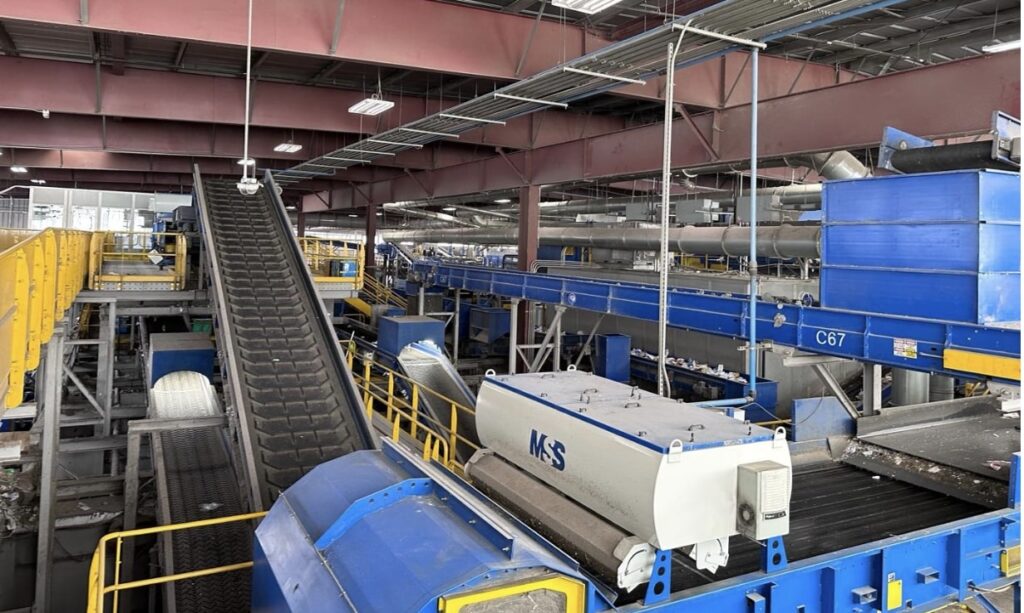Las Vegas Republic Services MRF
OVERVIEW
MRF Background
The Southern Nevada Recycling Center, located at 360 West Cheyenne North Las Vegas, Nevada, is one of North America’s largest and most advanced single stream residential recycling centers. The facility spans over 110,000 square feet with state-of-the-art recycling technologies and also consists of a Learning Center, which offers guests a direct insight into the recycling process. Inside the Learning Center, there is a recycling wall that provides information on what products can be recycled, how they are transformed, and how they are turned into new products.

VIEW
Location
STEPS
Recycling Process
The Material Recovery Facility (MRF) functions at a remarkable scale, managing approximately 2 million pounds of recyclables daily. The figure below outlines the process flows of materials through the facility. Central to its operation are the metering bins, carefully positioned to regulate the quantity and flow of recyclable materials from the tipping floor to the pre-sort deck. Here, the manual sorters undertake the task of manually removing non-recyclable items from the stream, ensuring the least contamination of recyclable materials. Furthermore, oversized recyclable materials are recognized and separated for specialized processing.
Next, materials are passed through the Old Corrugated Container Screen, where cardboard is sorted from the other recyclables. This stage ensures that OCC, which is one of the most valuable products, is sorted correctly for recycling. Meanwhile, the facility’s groundbreaking Glass Clean-Up System utilizes pioneering technologies. It combines principles of physics and engineering to improvise glass recovery. Through a series of structured designed processes that involve trommel screening and vacuum extraction, clean glass material is separated from fine particles and debris and prepared for advanced processing.
Next, the recyclables are passed through news screens, accurately separating paper materials from the stream, including newspapers and several other paper commodities smaller than cardboard. Further, the paper Optical Sorter, having advanced 2D and 3D technologies, quickly identifies and segregates fiber from non-fiber products, ensuring precision and accuracy in the sorting process.
Further down the line, dedicated equipment such as the Magnetic Drum and the Eddy Current are designated for separating ferrous-containing products and aluminum cans, respectively. These state-of-the-art technologies make the sorting process more efficient and enhance the recovery of materials.
With its refined capabilities, the Optical Sorter precisely sorts plastics by type and can even further segregate based on color, density, or other criteria. This equipment plays a vital role in expanding the plant’s recycling efficiency, given the enormous number of plastic products received daily.
Lastly, the process ends at the Baler, where the sorted recyclables are compacted into bales for transportation. The weight of these bales ranges between 1,400 to 2,000 pounds and is mostly shipped to around 150 mills around the world. Some of the final bales consist of materials such as OCC, ONP, Aluminum, HDPE, etc. Amazingly, this entire process is concluded with outstanding efficiency normally within 24 hours from the second, recyclable products are first emptied onto the tipping floor, underlining the facility’s pledge to sustainability and optimal resource use.

MAP
Facility Layout
The figure below depicts the facility layout of the Nevada MRF, showing the arrangement of key equipment. It provides a visual representation of the workflow within the MRF facility. Hover on each marker to view its feature.





